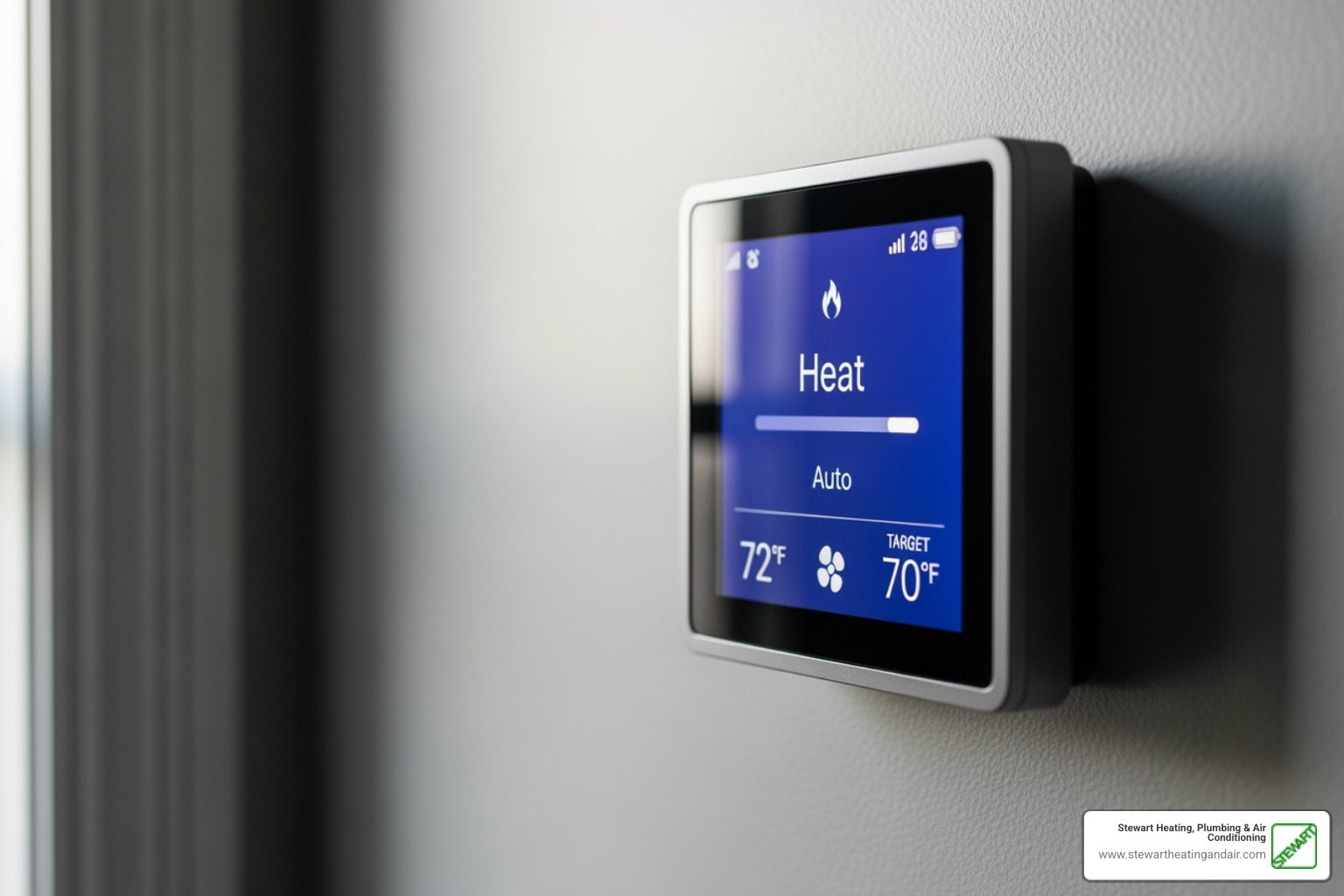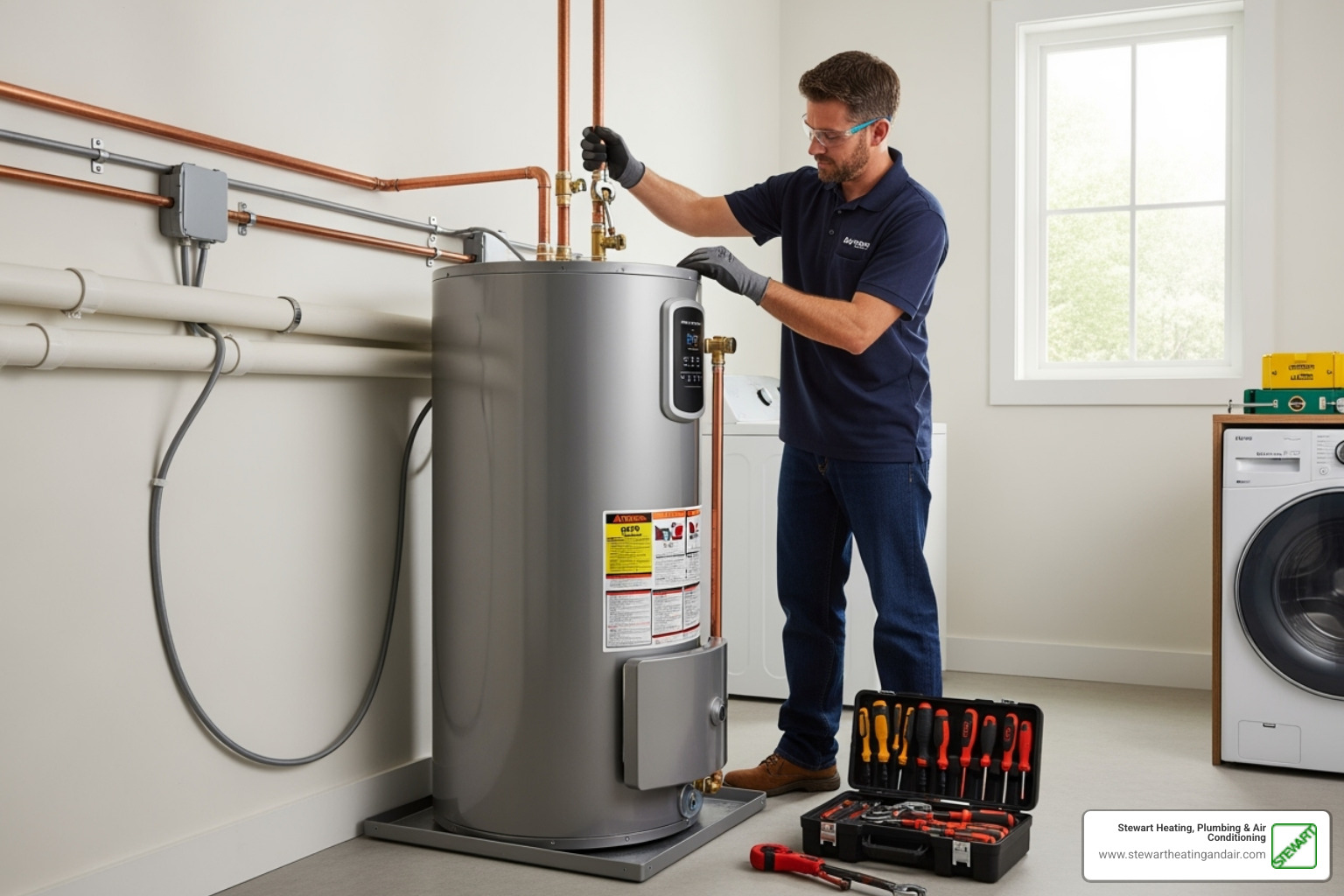
When Your Furnace is Blowing Cold Air: Understanding the Problem
A furnace blowing cold air is a frustrating problem, especially on a chilly day. Instead of warmth, you're greeted with a blast of cool air from your vents. Fortunately, many causes are simple fixes, while others require a trained HVAC technician.
Quick Answer: Common Reasons Your Furnace Blows Cold Air
- Thermostat Issues - Fan set to "ON" instead of "AUTO" or incorrect mode
- Dirty Air Filter - Restricted airflow causing overheating and shutdown
- Pilot Light or Ignition Failure - Burners can't light, but blower still runs
- Flame Sensor Malfunction - Dirty sensor shuts down gas flow as a safety measure
- Overheating - High limit switch triggers shutdown due to blocked airflow
- Clogged Condensate Line - Safety switch prevents burner operation
- Gas Supply Problems - Valve closed or insufficient fuel delivery
- Leaky Ductwork - Heated air escapes before reaching your rooms
Many of these issues are preventable with regular maintenance. Understanding the potential causes helps you decide whether to troubleshoot yourself or call for professional help.
This guide will walk you through the most common reasons for a furnace blowing cold air, explain which problems you can fix, and help you know when to call Stewart Heating, Plumbing & Air Conditioning for expert service.

Must-know Furnace blowing cold terms:
First Steps: Simple DIY Checks You Can Do Right Now
Before calling for help, a few quick checks might solve your furnace blowing cold air problem. Many issues have simple solutions you can handle yourself.
Check Your Thermostat Settings
Your thermostat is the control center, so it's the first place to look. An incorrect setting is a common culprit.

First, confirm the thermostat is set to "Heat" and the temperature is set higher than the current room temperature. Next, check the fan setting. If it's on "ON," the fan runs constantly, circulating unheated air between heating cycles. Switch it to "AUTO" so the fan only runs when the furnace is producing heat.
Also, check for low batteries, as they can cause erratic behavior. If you have a programmable thermostat, verify the schedule is correct.
Inspect and Replace the Air Filter
A dirty air filter is a top reason for a furnace blowing cold air, and it's an easy fix.

When the filter is clogged with dust and debris, it restricts airflow. This can cause the furnace to overheat, triggering the high limit switch to shut down the burners for safety. The blower, however, may continue to run, pushing cold air through your vents.
Pull out your filter. If you can't see light through it, it's time for a replacement. Check your filter monthly and replace it every 1-3 months, or more often if you have pets or allergies. This simple task prevents many furnace issues. For more on system care, see our Furnace Maintenance services.
Check Vents and Reset the System
Poor airflow can also cause cold spots. Walk through your home and ensure all supply and return vents are unblocked by furniture, rugs, or other items. If some rooms are warm while others are cold, you may have accidentally closed dampers in your ductwork.
Finally, try resetting your furnace. Turn the power switch off (usually on or near the unit), wait a minute, and turn it back on. Also, check your home's circuit breaker and reset it if it has tripped. This can often clear minor system glitches.
Common Culprits: Why Your Furnace is Blowing Cold Air
If the simple checks don't work, the problem may lie deeper within your furnace's mechanical components. Issues with the ignition system, safety sensors, or fuel supply are common reasons a furnace is blowing cold air. While a brief puff of cool air at startup is normal, continuous cold air indicates a problem.
Pilot Light and Ignition Failure
Older gas furnaces (pre-1990s) often use a standing pilot light—a small, continuous flame that ignites the main burners. If this pilot light goes out, the burners won't light, but the blower may still run, pushing unheated air through your vents.

You can often relight a pilot by following the instructions on your furnace panel, but always prioritize safety. If the pilot won't stay lit, it could indicate a faulty thermocouple. For more on pilot lights, see resources from the National Association of Certified Home Inspectors.
Modern furnaces use electronic ignition systems (hot surface ignitors or intermittent pilots). If these components crack or fail, the burners won't light, resulting in a furnace blowing cold air.
Dirty Flame Sensor
The flame sensor is a safety device that confirms the burners have ignited. Over time, soot can build up on the sensor, insulating it and preventing it from detecting the flame. The system will then shut off the gas supply as a safety precaution, but the blower may continue to run.
This often causes short cycling: the furnace starts, runs for a few seconds, then shuts down. Cleaning the flame sensor can fix this, but it's a job best left to a professional if you're not comfortable working with gas components. Our team at Stewart Heating, Plumbing & Air Conditioning can handle this safely.
Overheating
It seems counterintuitive, but an overheating furnace is a common cause of cold air. A safety device called the high limit switch will shut down the burners if the internal temperature gets too high, while the blower continues to run to cool the unit down.
The primary cause of overheating is restricted airflow. A dirty air filter is the most frequent culprit, but blocked vents or a failing blower motor can also be to blame. If your furnace runs for a few minutes, blows cold air, and then repeats the cycle, it's likely overheating due to poor airflow. Addressing the blockage is key to solving the problem.
Deeper Problems That Require a Professional
Some issues causing your furnace to blow cold air are complex and potentially hazardous, requiring a professional technician. For your safety, do not attempt to fix problems involving gas lines, complex electrical components, or major mechanical failures.
Clogged Condensate Line
High-efficiency furnaces produce condensation, which drains away through a small pipe. If this condensate line gets clogged with debris, water backs up and triggers a safety switch that shuts down the burners to prevent water damage. The blower may continue to run, circulating cold air. You might see water pooling around your furnace. Clearing this line properly is a job for a professional. Our Emergency Furnace Repair team can help.
Leaky Ductwork
Your ductwork carries heated air throughout your home. If it has leaks or poor connections, a significant amount of warm air can escape into your attic or crawlspace. This not only wastes energy but also allows cold air to mix in, making the air from your vents feel cooler.

According to Energy Star, leaky ducts can account for 20-30% of air loss. Signs include uneven heating, high energy bills, and excessive dust. A professional technician can inspect and seal your entire duct system, improving comfort and efficiency.
Cracked Heat Exchanger
This is the most serious furnace problem. The heat exchanger transfers heat from combustion gases to your home's air. A crack can allow dangerous carbon monoxide (CO) to leak into your breathing air. The furnace's safety systems may shut down the burners, causing it to blow cold air, but the CO risk remains.
Signs of a cracked heat exchanger include soot buildup, strange smells, or visible corrosion. More importantly, unexplained headaches, nausea, or flu-like symptoms that improve when you leave the house are warning signs of CO exposure.
If you suspect a cracked heat exchanger, turn off your furnace immediately and call a professional. This is an emergency that requires expert diagnosis. For serious issues like this, contact us for Furnace Repair in Walnut Creek, CA.
Proactive Care: How to Prevent Future Chills
Most furnace problems, including a furnace blowing cold air, are preventable with proactive care. Regular professional maintenance is the key to a reliable and efficient heating system.
The Importance of Regular Maintenance
Annual professional maintenance is essential for your furnace's health and your family's safety. During a tune-up, a technician will perform a comprehensive inspection and cleaning, including:
- Cleaning burners for efficient combustion
- Inspecting wiring and electrical connections
- Checking safety controls like the flame sensor and limit switch
- Lubricating moving parts to reduce wear
- Verifying gas pressure and connections
- Inspecting the heat exchanger for cracks (a critical CO safety check)
- Cleaning the condensate line on high-efficiency models
This comprehensive service prevents breakdowns, improves energy efficiency, lowers utility bills, and extends your furnace's lifespan. Learn more about our Furnace Maintenance services.
Long-Term System Health
As furnaces age (typically 15+ years), they become less efficient and more prone to failure. If you're facing frequent repairs for a furnace blowing cold air, it may be more cost-effective to consider a replacement. Modern high-efficiency furnaces offer significant energy savings and come with a new warranty for peace of mind.
Additionally, most manufacturer warranties require proof of annual maintenance to remain valid. Skipping tune-ups could leave you with the full cost of an otherwise covered repair.
Whether you need a tune-up or are considering an upgrade, we can help you make the best decision for your home and budget. Explore your options on our Furnace Replacement page.
Frequently Asked Questions about a Furnace Blowing Cold Air
When your furnace is blowing cold air, it's natural to have questions. Here are answers to some common concerns.
Why does my furnace blow cold air for a minute when it first turns on?
This is usually normal. The blower fan may start before the furnace's heat exchanger is fully hot, pushing cool air from the ducts out first. Most furnaces have a delay to minimize this, but a brief period of cool air at startup is not a cause for concern. If the air stays cold for more than a few minutes, there is likely a problem.
What is the difference between a furnace blowing cold air and not blowing air at all?
These two symptoms point to different issues.
- Blowing Cold Air: This means the blower fan is working, but the furnace isn't producing heat. The problem is likely with the ignition, flame sensor, or gas supply.
- Not Blowing Air at All: This indicates a problem with air circulation. The cause could be a tripped circuit breaker, a faulty thermostat, a failed blower motor, or a severely clogged filter that has triggered a safety shutdown.
Understanding the difference helps narrow down the potential cause.
Can a gas supply issue cause my furnace to blow cold air?
Yes. Without fuel, your furnace cannot produce heat. The blower will run, but only circulate cold air. A gas supply problem could be a closed gas valve, an issue with the utility line, or an empty propane tank. The furnace's safety systems will prevent ignition if the gas supply is insufficient.
Important Safety Note: If you smell gas (a rotten egg odor), leave your home immediately. Do not operate any electrical switches. Once you are safe, call your gas utility company and a professional HVAC technician. Gas leaks are an emergency.
Stay Warm with Professional HVAC Service
While DIY checks can solve simple issues, many furnace problems require professional expertise for a safe and effective repair. When dealing with gas lines, electrical components, or potential carbon monoxide risks, calling a trained technician is the only safe choice.
When your furnace is blowing cold air, you need a fast, reliable solution. The certified technicians at Stewart Heating, Plumbing & Air Conditioning have the tools and experience to diagnose the problem accurately and fix it right the first time. Our commitment to quality service is why so many of our customers refer us to friends and family.
We proudly serve homeowners throughout Pittsburg, CA, and Contra Costa County, including Concord, Walnut Creek, Orinda, Oakley, Martinez, Lafayette, Danville, Brentwood, Alamo, Pleasant Hills, and Antioch.
If you've tried the basic troubleshooting steps and your furnace is still blowing cold air, or if you suspect a serious issue, don't wait. Your comfort and safety are our top priorities.
Ready to restore warmth to your home? Get expert HVAC repair in Concord, CA and let our team get your system running right.







